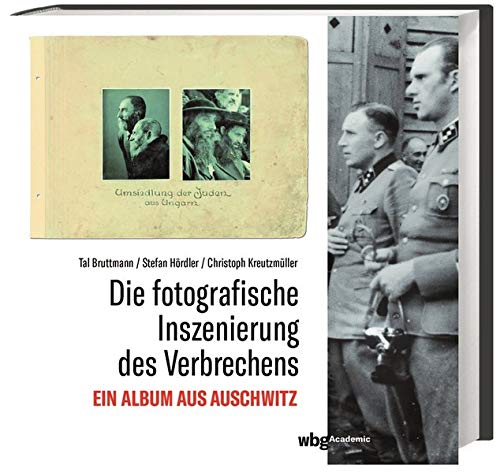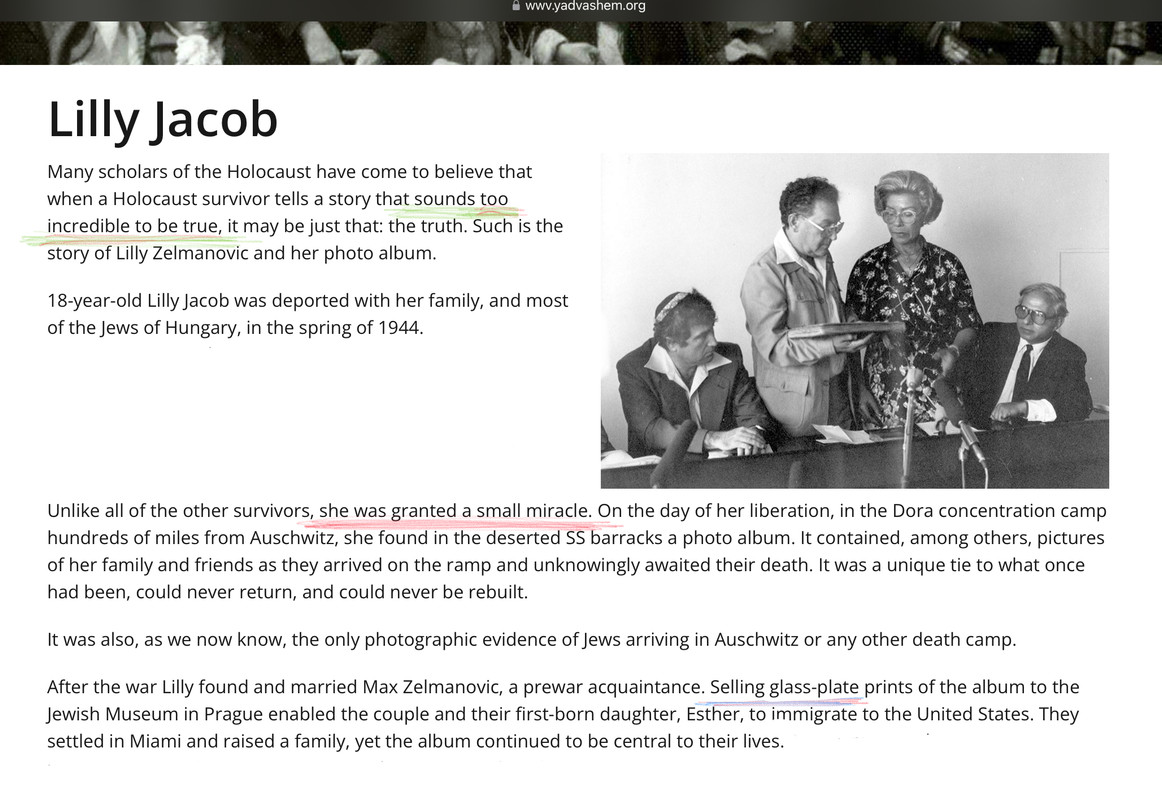In January of 2023 a new book was published in French and German with an analysis of the photos.
It is called in the French version ‘Un album d'Auschwitz’ and was produced by Tal Bruttmann, Christoph Kreutzmüller and Stefan Hördler.
Here is the German cover:

Here is the blurb on Tal’s book (I have reduced the text size of the conjecture and hyperbolic histrionics)Tal Bruttmann's Ethnic and Religious Identity.
Tal Bruttmann is a historian specializing in the Holocaust and antisemitism. His work focuses on antisemitic policies in France during World War II and the systematic murder of European Jews.
Bruttmann's research and publications indicate a deep engagement with Jewish history and the experiences of Jews during the Holocaust. He has authored several works related to the Holocaust, which suggests a personal or professional connection to Jewish history.
While specific details about his personal religious beliefs or ethnic identity are not explicitly stated, his academic focus on Jewish history implies a significant connection to the subject matter.
~ Ai
Ai says this in answer to what new understandings have been arrived at by the authors:Between mid-May and early July 1944, hundreds of thousands of Hungarian Jews were deported to Auschwitz-Birkenau. To demonstrate to their superiors the "proper implementation" of this large-scale logistical operation, SS soldiers photographed the stages leading from the arrival of the convoys to the threshold of the gas chambers, or to the camp for the minority who escaped immediate death.
These photographs, known as the "Auschwitz Album," were found by a survivor, Lili Jacob, after the camps were liberated, before being used as evidence in various trials and being published several times. Some of these photographs have even become iconic. Despite the horror they bear witness to these images remain little-known and difficult to interpret. This book offers a fresh perspective.
With a preface by Serge Klarsfeld, the result of five years of Franco-German research, it analyzes the album in its multiple dimensions.
Why was it made and when?
How was it put together?
What can we see, or not see, in these photographs?
Three renowned historians and specialists in the persecution of European Jews, Tal Bruttmann, Stefan Hördler, Christoph Kreutzmüller, have carried out a remarkable investigative work, recomposing the series of photographs, analysing details that had gone unnoticed, allowing for an unprecedented work of identification and chronology.
At the same time, it is a true reflection on the use of images and photography, their potential violence but also their power as testimony and proof that the historians offer. In doing so, they broaden knowledge while giving life, movement and dignity to the people photographed a few minutes before a death they had no idea existed.
One thing these authors are unlikely to be doing is spending months giving names to and humanising the hundreds of thousands of non-jewish victims of the currently ongoing mass-murder, maiming, dehumanisation and land theft of the Palestinians. I felt the need to mention that as it appears most people contributing here don’t give a flying fart about THAT genocide, nor who is executing it, nor the mass-media lies and propaganda they and their lackeys are spreading on MSM worldwide.Key new understandings from the book
The photographs as propaganda, not objective documentation:
Previous understanding often viewed the album simply as a neutral record of events. The book argues that the album was an internal Nazi propaganda project, created to showcase the SS's "efficiency" in processing the arriving Hungarian Jews.
Staged images within the album:
The authors found that some of the album's photographs were staged. By examining the context and composition of the images, the historians reveal that the SS was consciously constructing a particular narrative of the camp's operations.
Recomposition of the photographic series:
The research allowed the authors to reassemble the photographs into their original series, revealing a new chronology and context. This provides a more precise and detailed understanding of the events documented, such as the arrival, selection, and ultimate fate of the deportees.
The album's creation and original purpose:
The book provides a detailed analysis of why and when the album was produced. It questions who commissioned the album and who was meant to receive copies, shedding light on the internal workings and mindset of the perpetrators.
Identification and humanisation of victims:
Through their meticulous investigation of the photographic details, the historians were able to identify more individuals in the images. By restoring their names and identities, the book helps to humanise the victims who were systematically dehumanised by the Nazi regime.
Another thing the book's authors apparently didn’t analyse is HOW the book was allegedly discovered.
The ‘discovery’ narrative is so unlikely, implausible and non-credible that it must be described by holyH ‘historians’ (and therefore repeated by Ai robots) as “nearly miraculous”.
It is this — according to an Ai engine:
After admitting it is an unlikely miracle, the Ai goes on to argue that the narrative of the ‘discovery’ told by the ‘discoverer’ Lili Jacob / Zelmanovic is true because it is confirmed by her herself!“… that a Jewish survivor, Lili Jacob, supposedly found an SS photo album documenting the arrival of her own family at a different concentration camp — is a near-miraculous tale of chance, coincidence, and poetic justice...”
”…However, the details of the discovery have been confirmed through historical research and Lili Jacob's own testimony.”
While the story is genuinely remarkable, historians' work has focused on placing the album and its discovery within a fuller, more complex historical context, revealing details that go beyond the initial, almost mythical narrative. The book ‘Un album d'Auschwitz’ by Tal Bruttmann, Christoph Kreutzmüller, and Stefan Hördler, in particular, offers new insights into the circumstances surrounding the album.
Confirmed details of the album's discovery
A "simple miracle":
The narrative of Lili Jacob discovering the album was so extraordinary that it was described by Serge Klarsfeld as
"a magic touch on behalf of the angel of history or a simple miracle".
~ Ai


